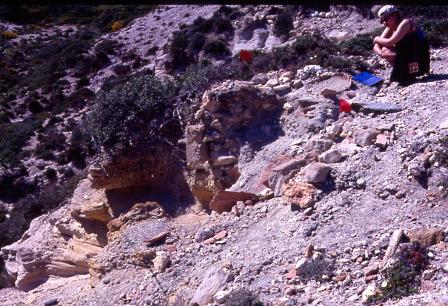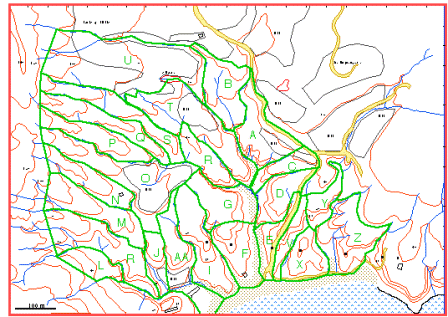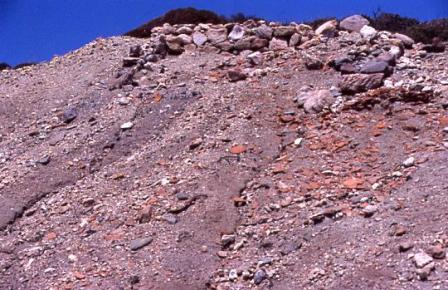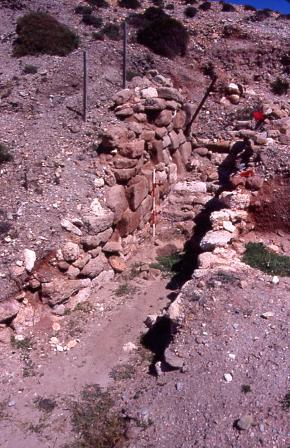Aghia Kyriaki archaeology
Aghia Kyriaki archaeology

Walls, flooring and pithoi in situ on edge of ridge, central Aghia Kyriaki.
The remains of a substantial community at Aghia Kyriaki have been recognised since the end of the last century when a Scotsman, Duncan MacKenzie, visited the bay while excavating at the well-known Bronze age site of Phylakopi. He noted the existence of a substantial staircase with forty steps leading down the wall of one of the steep gullies. Only twenty-six steps can be seen today (see image below) but the stone arch over the lower part of the staircase remains. The combination of terraces and steep gullies makes the site an unusual location for a settlement, given that flatter land exists immediately to the north. However, there are a number of reasons why Aghia Kyriaki may have been occupied. It is close to a bay suitable for importing and exporting goods and may have been a centre for exploiting the agricultural and/or mineral wealth of the surrounding area.
The most spectacular feature of Aghia Kyriaki is the existence of abundant quantities of coarse pottery in the form of amphorae, pithoi and lekanae dating from the Late Hellenistic to the Early Roman period, c200 BC - 200 AD. Such large numbers of vessels, many in collapsed stacks as well as in-situ of this nature within a relatively small settlement points to commercial and perhaps industrial activities. Their presence may be related to the exploitation of mineral resources.

Sectors for systematic walkover survey of Aghia Kyriaki
The first step in surveying the Aghia Kyriaki site was to divide the area into small units or sectors which follow the natural lie of the land. The archaeological features, about 150 including stairs and walling as well as pottery, were surveyed and plotted onto our new topographic map. Some features are illustrated here.

Abundant sherds, originally enveloped in sediment, and gradually being exposed on erosion.

Remains of stone staircase which is set into the steep side of a ridge. This feature was previously excavated by the Greek Archaeology Service (Mrs I Triandi, pers. comm.)
Reference
Photos-Jones, E., Hall, A.J., Atkinson, J.A., Tompsett, G., Cottier, A. and Sanders, G.D.R. 1999. The Aghia Kyriaki, Melos, Survey: prospecting for the elusive earths in the Roman period in the Aegean. The Annual of the British School at Athens. 94. 377-413.
-----------------------------

